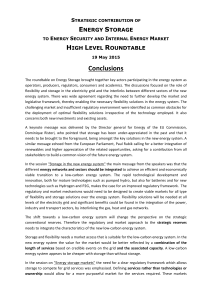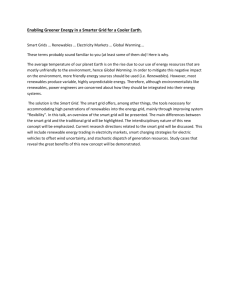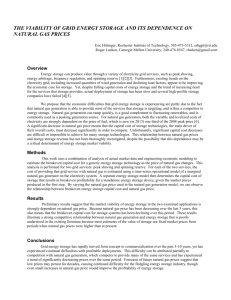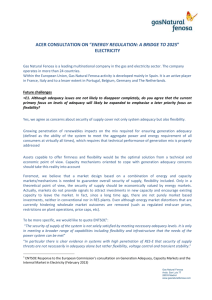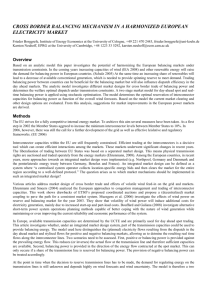Wartsila 1
advertisement
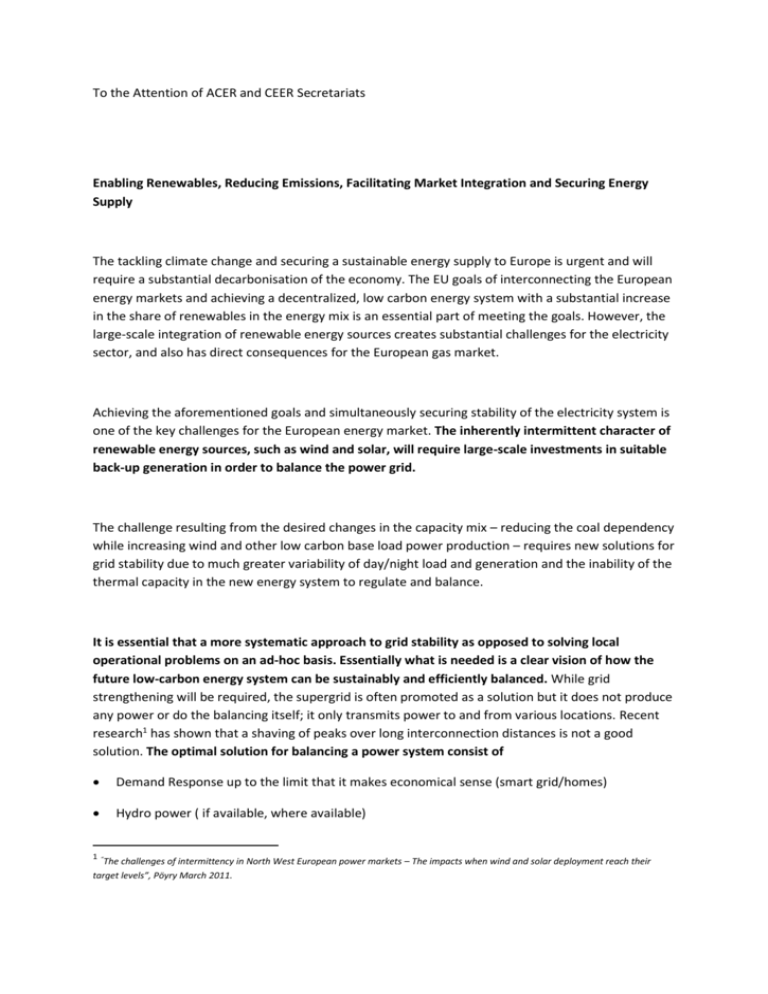
To the Attention of ACER and CEER Secretariats Enabling Renewables, Reducing Emissions, Facilitating Market Integration and Securing Energy Supply The tackling climate change and securing a sustainable energy supply to Europe is urgent and will require a substantial decarbonisation of the economy. The EU goals of interconnecting the European energy markets and achieving a decentralized, low carbon energy system with a substantial increase in the share of renewables in the energy mix is an essential part of meeting the goals. However, the large-scale integration of renewable energy sources creates substantial challenges for the electricity sector, and also has direct consequences for the European gas market. Achieving the aforementioned goals and simultaneously securing stability of the electricity system is one of the key challenges for the European energy market. The inherently intermittent character of renewable energy sources, such as wind and solar, will require large-scale investments in suitable back-up generation in order to balance the power grid. The challenge resulting from the desired changes in the capacity mix – reducing the coal dependency while increasing wind and other low carbon base load power production – requires new solutions for grid stability due to much greater variability of day/night load and generation and the inability of the thermal capacity in the new energy system to regulate and balance. It is essential that a more systematic approach to grid stability as opposed to solving local operational problems on an ad-hoc basis. Essentially what is needed is a clear vision of how the future low-carbon energy system can be sustainably and efficiently balanced. While grid strengthening will be required, the supergrid is often promoted as a solution but it does not produce any power or do the balancing itself; it only transmits power to and from various locations. Recent research1 has shown that a shaving of peaks over long interconnection distances is not a good solution. The optimal solution for balancing a power system consist of Demand Response up to the limit that it makes economical sense (smart grid/homes) Hydro power ( if available, where available) 1 “The challenges of intermittency in North West European power markets – The impacts when wind and solar deployment reach their target levels”, Pöyry March 2011. Smart Power Generation inside load pockets and in grid nodes Strengthening the grid where applicable. Major savings can be achieved in grid investments by locating high efficiency, low carbon balancing reserves inside the load pockets and covering the consumption peaks and grid balancing with them. Optimising the European gas and electricity markets for grid balancing There are currently two major obstacles impeding the widespread commercial use of dynamic power plants to balance the system: The structure of the electricity markets: Current electricity markets are based on the trading of energy, and the available income for balancing plants is not adequate to justify investments on new capacity. There is a need for capacity markets that reward balancing plants also for the multitasking capabilities even when the plants are not running, but are on stand-by, waiting for the next task. The structure of the gas markets: In Europe the pricing structure of gas is unfavourable for nonbase load users, making investments in peaking power plants unfeasible. Currently the gas customers typically must commit to a certain steady gas capacity, which the plants needs to pay a relatively high capacity fee for. The pricing structure should allow gas usage on a more irregular basis (i.e. when the need arises), which is the case with balancing plants. The EU (ACER and ENTSO-e, ENTSO-g) can help facilitate the increased use of dynamic power plants as a grid stabilising backup generation by: 1. Developing a clear vision and strategy for flexible power needed by the decentralised low carbon energy system of the future. The European Commission needs to conduct a study to examine the technical requirements for balancing this new system, and ascertaining the optimal solution from both an economic and environmental perspective within the given reliability requirements / framework. 2. Market regulators (ACER, ENTSO-E, ENTSO-G) need to apply clear rules for access, and the functioning of the energy market is fair and open to all generation types. Furthermore, the Network Codes currently under development should not discriminate against any technology capable of supporting the system but encourage their use. 3. While promoting the investments for more renewables, the market structures and the necessary technical norms that enable private sector investments into dynamic power plants need to be developed simultaneously. 4. Developing the gas market so that it is capable of efficiently and reliably delivering variable amounts of gas to power plants at reasonable prices. 5. Ensuring that European initiatives to open up gas markets and facilitate cross-border trade via ACER (Agency for the Cooperation of Energy Regulators) EASEE-gas (the European Association for the Streamlining of Energy Exchange-gas), CEN (European Committee for Standardization) and ENTSO-G (European Network of Transmission System Operators for Gas) sufficiently take into account all quality aspects of natural gas as requested by power plant manufacturers.



